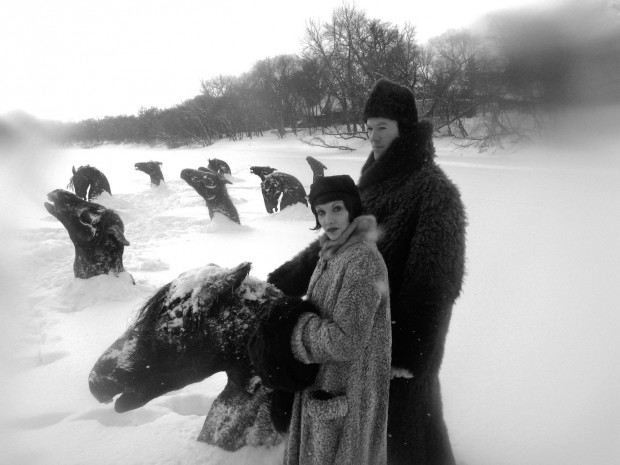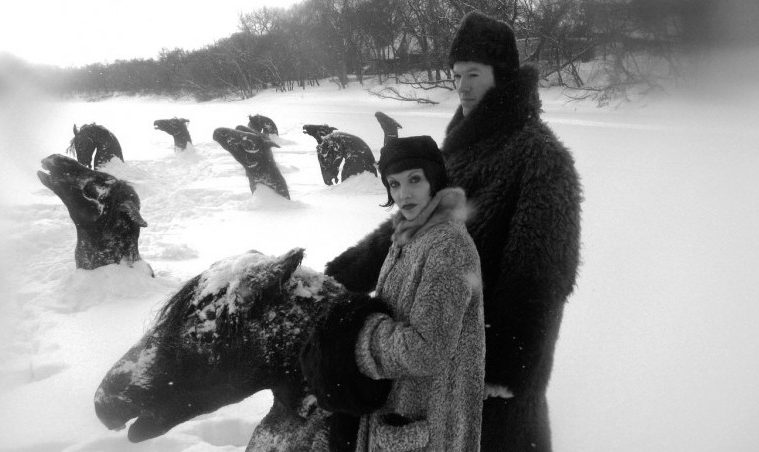
Looking back on this still-young century makes clear that 2007 was a major time for cinematic happenings — and, on the basis of this retrospective, one we’re not quite through with ten years on. One’s mind might quickly flash to a few big titles that will be represented, but it is the plurality of both festival and theatrical premieres that truly surprises: late works from old masters, debuts from filmmakers who’ve since become some of our most-respected artists, and mid-career turning points that didn’t necessarily announce themselves as such at the time. Join us as an assembled team, many of whom were coming of age that year, takes on their favorites.
It’s some time after midnight, and you’re riding the bus. The rehearsed movements from here to bed are already running through your head: ten or eleven more blocks, fifty steps to the building door, up two flights of stairs, three doors in total. Effectively, you’re already asleep. So your mind wanders into a waking dream space encased in this bus. The lights, buildings, and trees around you reflecting from one window to the other intermingle with your recollections, from what you did two hours ago before you got on the bus to what you did six years ago on that bench you’re about to pass. Maybe you can see the city skyline, or, on occasion, a passing car or a silhouetted person. Perhaps, for a second, you dream about what’s way out there, off the bus route and past the skyline. The narrative of Guy Maddin’s My Winnipeg comprises this split second.
Late-night public transportation serves as the spine for our journey into the city of Winnipeg and the mind of Guy Maddin, which are, in the lonesome frustrated air of the circling streetcar, inseparable. What follows for the rest of the 79-minute film is difficult to pin down by genre, and remains, ten years on, one of the furthest forward in the vanguard of 21st-century formally flexible documentaries. My Winnipeg is a stringent Marxist history of the city of Winnipeg interspersed with a raucous, often silent comedy. We see grainy footage of the snowy streets as if from a passing car or trolley inserted within Maddin’s black-and-white phantasmagoria. There are no formal restrictions — silent intertitles, stock video footage, stock color photos, animations, and grainy color camcorder DV are all included. But because the filmmaker is always “trapped” in Winnipeg and his memories, we return to the circling streetcar, host to “ghosts” of all kinds.
Memories of Fellini’s 8 ½ flicker in the mind, and Maddin does little to distance himself from the well-traveled cinematic landscape of directors having a good old navel gaze. But the difference between 8 ½ and My Winnipeg points to a core reason for Guy Maddin’s genius. Where the first scene of 8 ½ puts us in a nice Italian car with Fellini’s avatar Marcelo Mastroianni, My Winnipeg starts on a much less impressive trolley with (apologies to him, but) Darcy Fehr as “Guy Maddin.” His flashy style is always mapped onto a dowdy parochialism, and often has a laser focus on his ho-hum hometown. My Winnipeg may be his masterpiece in this regard.
Maddin, as has always been central to his aesthetic, pushes towards a detailed hyperspeed montage of surreal images, but a montage that winks back at its extremely low-budget origin and production. He is a backyard filmmaker at heart, a director for whom something as intimate as black sheets covering a garage wall can be a soundstage. In films like Archangel, The Saddest Music in the World, and Brand Upon the Brain, Soviet city symphonies and expressionist canvas backdrops are mimicked by hand with a physical closeness that lays bare their psychological underpinnings.
This stylistic tendency becomes the narrative arch of My Winnipeg, where Maddin turns his mental processes into fodder for story. Before we even get to the dreamspace streetcar, the first image is of the director’s mother, played by Ann Savage, 60 years on from Detour, and being directed from offscreen by Maddin. Inasmuch as there is a story to My Winnipeg, it concerns the Maddin character, dreaming throughout his extended trolley trip, living out his memories in an attempt to exorcise those ghosts that keep him mentally and physically in Winnipeg. In order to complete the exorcism, the director hires local actors to play his family and restage events from his childhood.
Such is the film’s pace that the restaging of his childhood, the primary narrative event, scarcely covers a chunk of the runtime. It is a tough task to describe My Winnipeg because it is a tough task to describe the director’s Winnipeg, which is at once an imprisoning force and a series of shifting illusory surfaces. Winnipeg is a city where “everything here is a euphemism,” and there are not too many straightforward facts in Maddin’s voiceover of his film. Winnipeg doesn’t have “ten times as many sleepwalkers as the average” as he alleges, but it is a city where corporate interests have destroyed cherished landmarks and have consigned others to being mere ghosts, as is well elucidated. This Winnipeg is a city where a psychic confluence under the forks of two rivers causes a hotbed of labor politics in the twentieth century.
These places draw Maddin back time and again, places like the Sternbergian restaurant downtown and the hallowed hockey rink. In one of the films greatest tragedies, the old Winnipeg Arena is demolished, but not before the director gets one last commemorative piss in the fabled men’s room trough. This activity, one of the picture’s many lewdnesses, is in lockstep with Maddin’s sensory and Freudian treatment of memory. And that act demonstrates how his ritualistic journey through the places of his past fails to exorcise him of his past the way he would like. The irony, an irony not lost on the man, is that it’s the very belief that only by returning home can he conquer home that has always trapped him there. This is what he means when he sarcastically admits: “When you miss a place enough, the backgrounds in photos become more important than the people in them.”
In a last ditch attempt to free himself of the burden of having to care about his place of origin, Maddin concocts a revolutionary hero – Citizen Girl, who restores all the buildings and people and the entire city to their ahistorical former glory, so that they can stop being ghosts. This effort, shot in Riefenstahl style, is half-hearted, as he knows what direction history moves. The last rhetorical questions he asks himself after creating Citizen Girl are, “Now I can be free of the ghosts? How can one live without ghosts? What’s a city without ghosts? Unknown.” The film ends with a montage of those ghosts: the ghost of the old house, the ghost of the mother and dead brother. The streetcar ride out of town is forgotten and unfinished.
Follow our complete retrospective on the best films of 2007.

